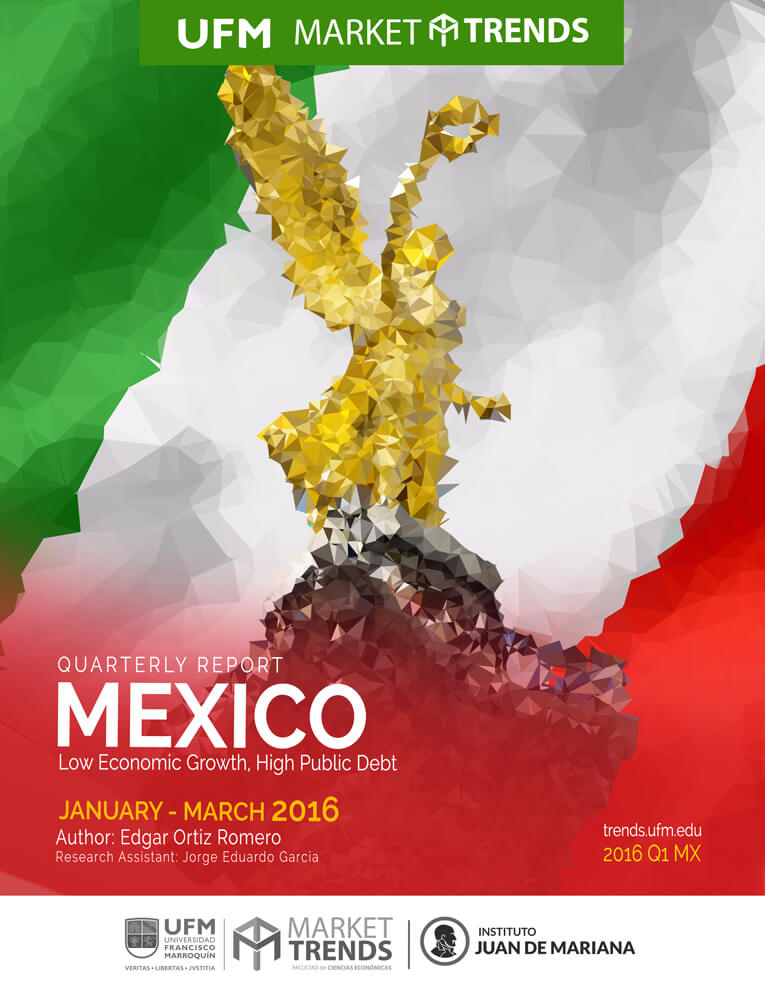Although Mexico’s economic growth has remained stable since the third quarter of 2014, it slowed some during the fourth quarter of 2015, compared to the preceding quarter. It is projected that the Mexican economy will grow at a similar pace during 2016.
The Mexican economy remains stable but lackluster. Growth for 2016 is projected at below 3%, as has been the case in the past few years. The industrial sector, unable to get off the ground, continues to lag behind. Demand in cyclical sectors indicates that new vehicle sales have increased, in sharp contrast to construction trends.
Unemployment remains below 5% and informal employment remains on a slow, downward trend. Household and commercial credit growth have improved, if ever so tentatively. A portion of the increase in credit can be explained by the appreciation of debt denominated in foreign currency at a time when the Mexican peso is weak.
Inflation, while slightly higher than in 2015, is below 3%. This is low, comparatively speaking, for a country that has had relatively higher inflation rates throughout its history. Annual inflation at the end of 2015 was 2.19%, the lowest in forty-six years. The challenge for Banxico is the devaluation of the Mexican currency. This is why, in February, Banxico intervened in the foreign exchange market to stem the peso’s continual depreciation. Banxico also raised its interest rates in December in response to the Federal Reserve’s action. This was followed by an increase of 50 basis points in February, partly to confront the foreign-exchange depreciation.
The most negative development is the increase in public debt, which went up 14 percentage points from 2013 and reached 54% of GDP at the close of 2015.



